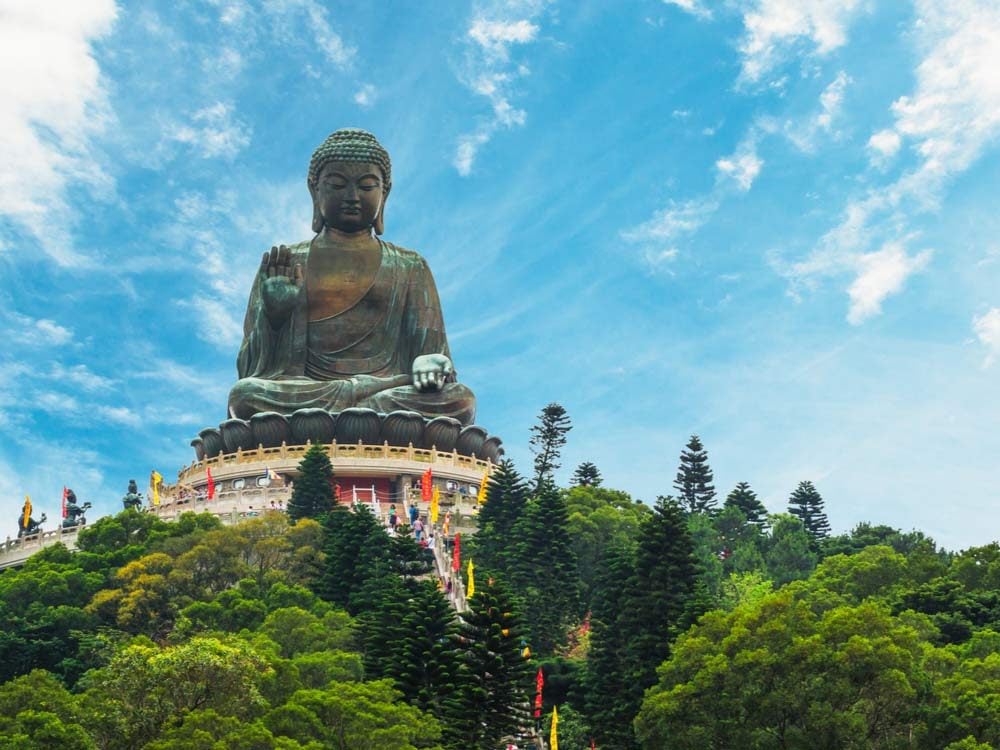
1. The Giant Buddha at Po Lin Monastery
Take a spiritual journey to Po Lin Monastery located on Lantau Island. Lantau Island is part of the outlying islands of Hong Kong and is a beautiful green retreat. Atop a mountain, the Monastery was founded in 1906 by three monks and originally referred to as the “The Big Hut,” but in 1924, it was renamed to its present name—meaning “Precious Lotus.”
The Monastery started out as a small temple, but over the years it has grown and is now home to the largest outdoor sitting bronze Buddha in the world: 34-metres high and weighing 250 tones. The Giant Buddha, Tian Tan, attracts a pilgrimage of worshippers and tourists alike to marvel at the grand structure. There are 268 steps to negotiate in order to get close to the statue, or you can take a gondola up with panoramic views of the scenery and the South China Sea.
Check out the 10 Most Amazing Temples in the World.
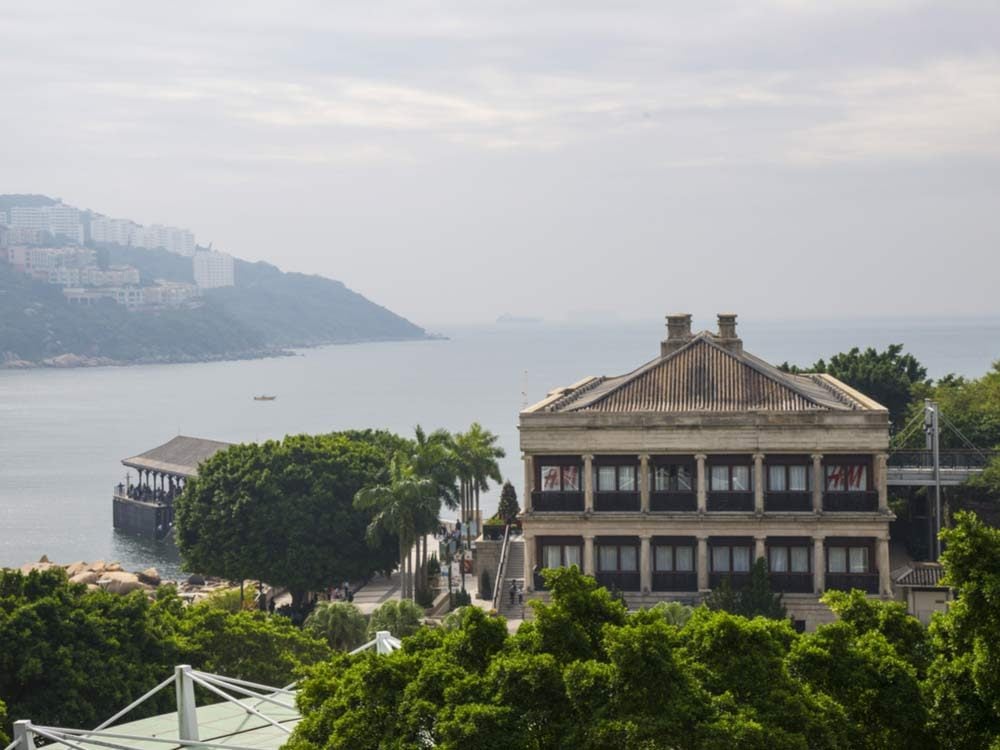
2. Murray House
Everyone visiting Hong Kong should make their way to the relaxed seaside of Stanley, a quiet residential community located on the southern part of Hong Kong island. The town boasts grand views of Stanley Bay, clean walking promenades and several public beaches. Standing prominently against the Bay is Murray House, an old Victorian-era building built in 1844. It served as barracks for the British Army and was named after Sir George Murray (1772-1846), who was a British army officer and politician.
It originally stood in the business district of Hong Kong island, but to make way for new buildings, it was moved stone by stone to this new location in Stanley. Due to its historical significance and architectural beauty, it was restored and is now maintained as a heritage building. It is a place for weekend family gatherings and houses a restaurant and the Hong Kong Maritime Museum.
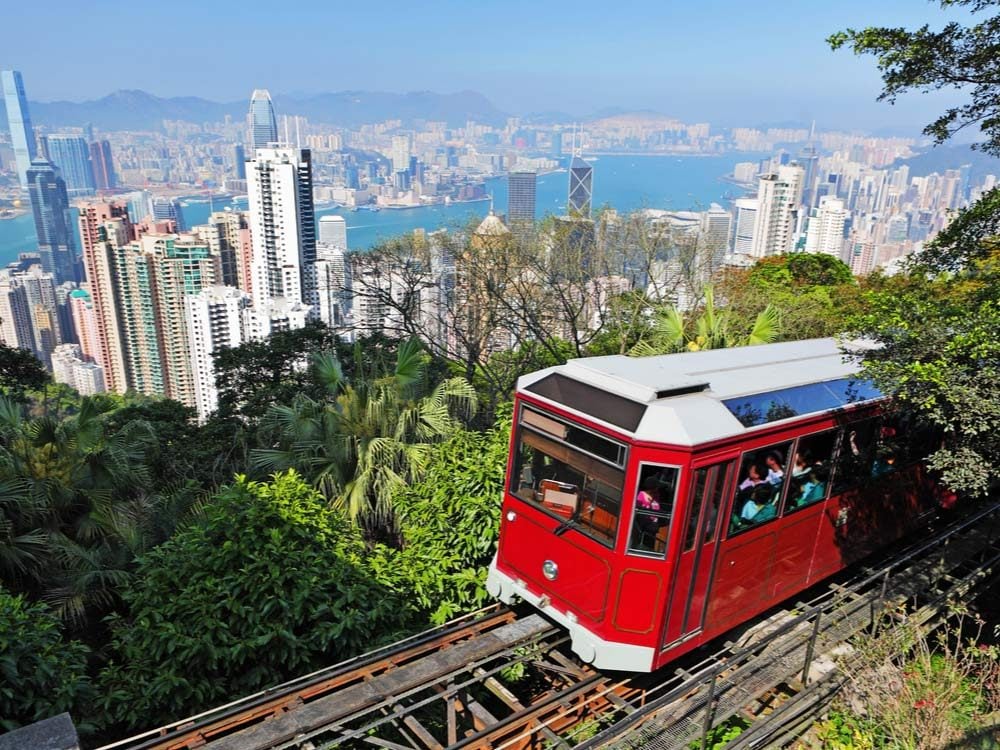
3. The Peak Tram
Make your way up to Victoria Peak on the cable-pulled tram, operating since 1888. Enjoy the ride as you travel 396-metres above sea level to take in the superlative views of the cityscape. The journey takes you along a 1.4 km-long railway and the ascent forces you to sit back as it goes up 27-degree slopes. At the time of its grand opening, it was the first cable funicular in Asia and considered an engineering marvel. It originally ran by coal steam, but later switched to electric power.
The tram carriage itself has gone through a series of modern changes, but it still retains its old-time feel with its vintage style wooden bench seating, and continues to run on its original tracks. The lower tram terminal houses a gallery showcasing 120 years worth of memorabilia. From old uniforms to photos of dignitaries taking their first ride, it gives you a historical look at how the tram started and how it has evolved.
Check out these 7 Unusual Modes of Transportation from Around the World.
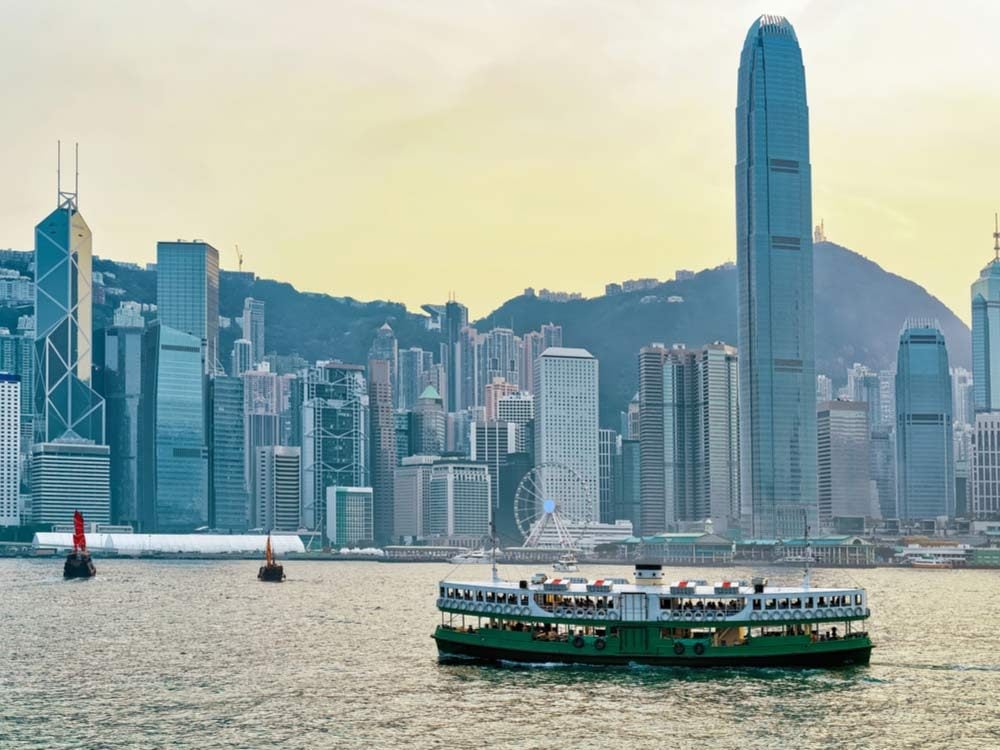
4. Aboard the Star Ferry
Cruise across Victoria Harbour on the iconic Star Ferry, operating since 1880. Victoria Harbour itself is one of the most recognizable and busiest harbours in the world, and the seven-minute journey takes you between Hong Kong Island and the Kowloon Peninsula.
The ferry is a double-decker boat with wooden decks and bench seating. Some might argue that the ferry looks dated, but its 1920’s feel is what makes the experience feel like you are travelling back in time. It provides the traveller with a different perspective to see the city’s skyline, and at very economical price point. This passenger service started out when a cook named Dorabjee Naorojee Mithaiwala from India decided to change vocations and offer ferry transportation. His fleet of acquired boats all had the word “star” in it and that is how it became known as the “Star Ferry” service.
These iconic Southeast Asian tourist attractions will not leave you disappointed!
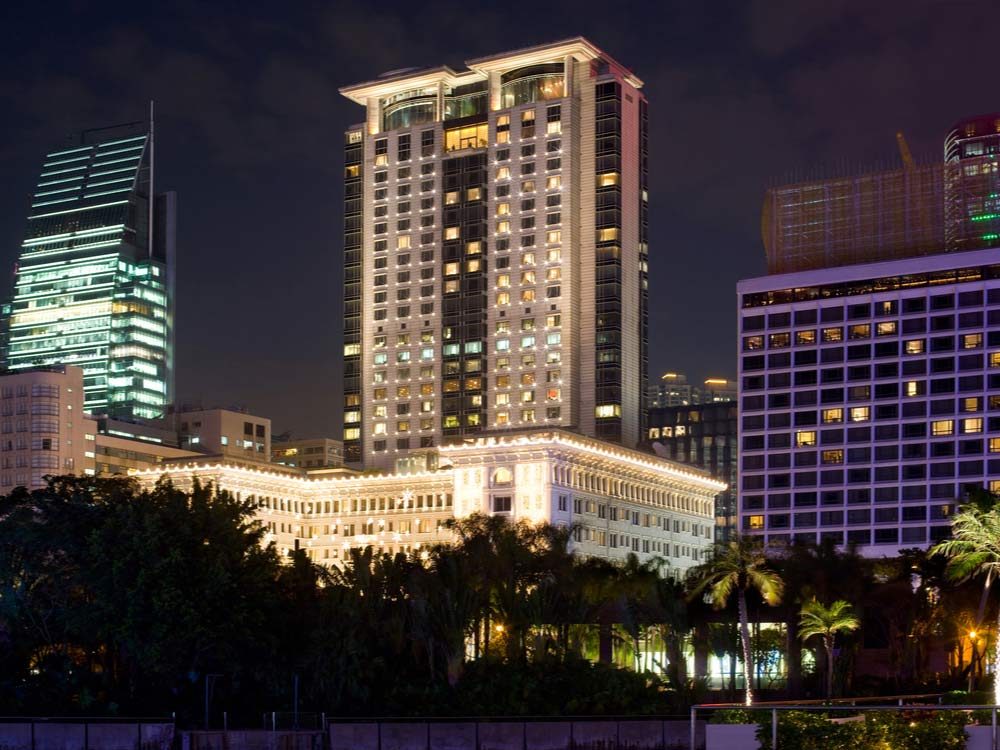
5. High Tea at the Peninsula Hotel
Experience High Tea like the British colonials did at the famed Peninsula Hotel. This elegant neo-classical hotel, built in 1928, is one of the most expensive accommodations in Hong Kong, as well as a historical landmark. This is where the rich and famous stayed at, with its own rooftop helipad and its own fleet of Rolls Royce vehicles. This is also the site where the British Governor of Hong Kong surrendered at the Japanese headquarters on the third floor of the hotel in 1941, ending the Battle of Hong Kong.
High Tea itself is an old-time British tradition and Hong Kong has adopted it as one of its own afternoon rituals. This is not your average coffee break but a foodie event like none other. This refined experience will leave you feeling nostalgic, thinking of how the citizens of that era once met here and enjoyed their afternoons, sipping tea and discussing culture and politics.
Check out the 10 Most Expensive Luxury Hotels in the World.
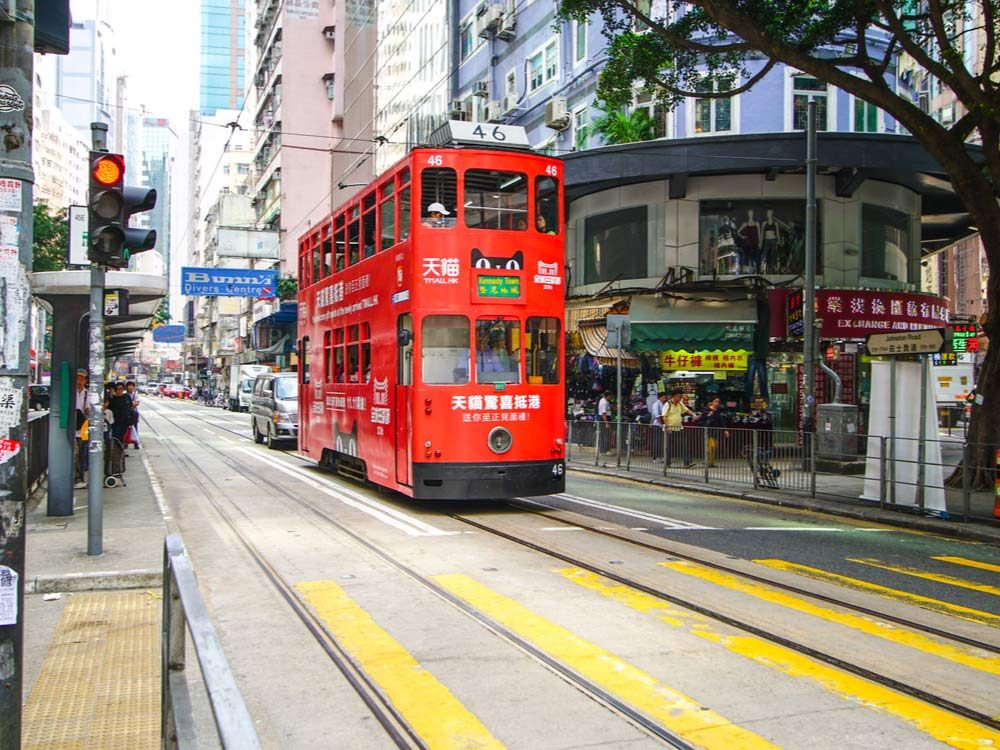
6. Take a Ride on the Antique Streetcars
Explore the city streets like the locals do on the historic rickety double-decker streetcars, still in operation since 1904. Enjoy the ride as the antique streetcar transverse east to west along the busy north shore of Hong Kong Island. The contrast between the old commuter streetcar and the modern skyscrapers is what Hong Kong is all about, mixing the old with the new.
They were originally single-deck trams and were shipped in pieces from the U.K. and then assembled in Hong Kong. When it first opened for business there was a first class and third class ticket system, and the tickets were printed and imported from England. Now, the streetcars are open to all public commuters with no class distinction. To get the best views of the many colourful neighbourhoods, a window seat on the upper deck is recommended.
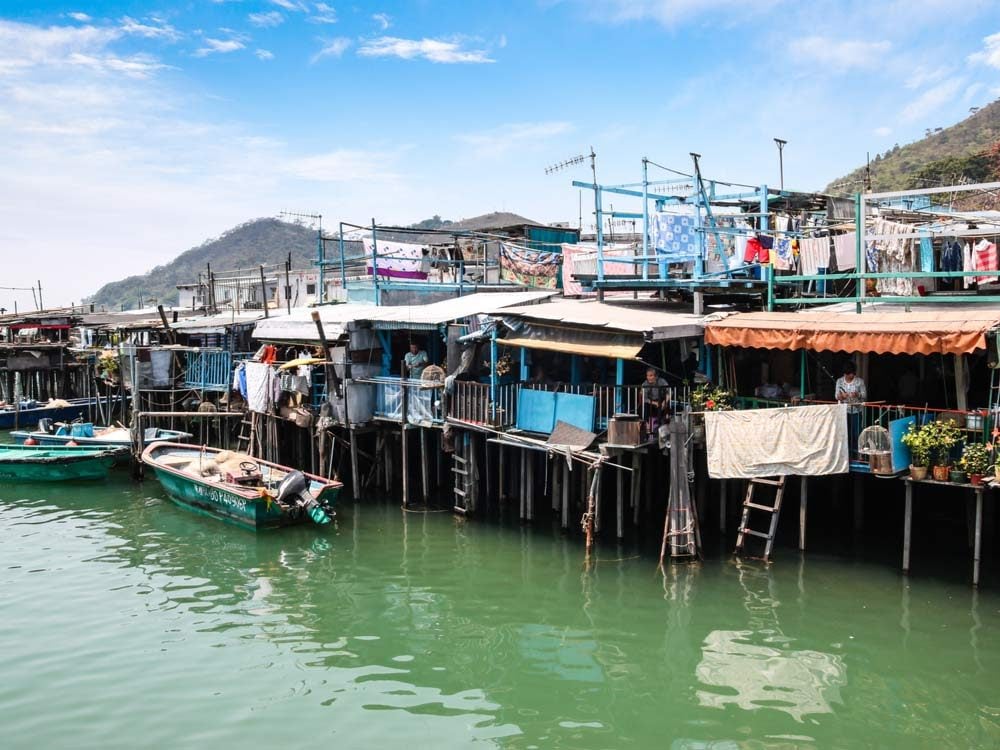
7. Tai O, a Community on Stilts
Visiting Tai O feels like a piece of heritage preserved. This traditional fishing village dates back more than three centuries and is home to the Tanka people who built their homes and businesses upon stilts. A tour of this village offers a rare glimpse into a rural community with ancient temples and a look at how the villagers use the natural environment to produce their culinary specialties, shrimp paste and salted fish.
The village itself is divided by a river system and originally the two sides of the town were linked by an old-fashioned rope-drawn ferry system. Now, there is a manual drawbridge that connects the two halves. The pace of modernity may have squashed the fishing industry here, but you will still see villagers mending fishing lines and drying fish out on their stilt houses. Tai O is definitely a unique opportunity to discover Hong Kong’s past.